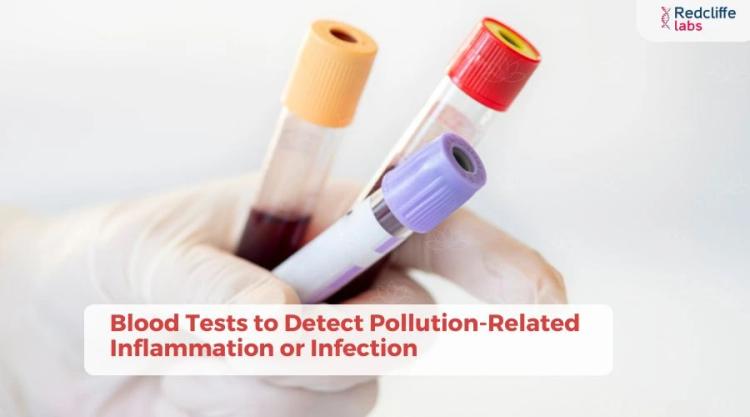Black Fungus: Symptoms, Risks, Prevention and More

Medically Reviewed By
Dr Divya Rohra
Written By Muskan Taneja
on Jun 26, 2024
Last Edit Made By Muskan Taneja
on Jul 19, 2025

Did you know that almost 5 crore people in India are affected by some type of fungal infection yearly?
What’s even more alarming is that 10% of these people are infected with Black fungus, a potentially deadly fungal disease.
Since the COVID-19 waves, this infection has spread at a terrifying rate, affecting more and more people every coming year.
So, how much do you know about this infection? Are you aware of black fungus and its types, symptoms, and risk factors?
If not, you really should; you’re just where you need to be. Read this blog to learn all about black fungus infection.
What is Black Fungus?
Black fungus, or Mucormycosis, is an uncommon but dangerous fungal infection caused by ‘Mucormycetes,’ a type of fungal mold. This fungus is commonly found in soil, plants, compost, animal excretions, and decaying organic matter.
It is also present in air, water, and edible items and may be transmitted through inhalation, contact with infected matter, or ingestion. People inhale and come in contact with many fungi particles daily, but they do not interact with the body and generally do not cause infection.
However, people with a compromised immune system or with some other medical conditions are at a higher risk of infection.
What are the different types of Black Fungus?
Mucormycosis can be classified into various types based on the body parts it affects and how it spreads:
Pulmonary Mucormycosis
Pulmonary Mucormycosis is a type of black fungus infection that often result in affecting the lung function or might cause sinuses. It is commonly diagnosed in immunocompromised patients, such as stem-cell recipients or organ transplant patients. It may also affect people with hematologic malignancy or neutropenia. This infection has a high mortality rate, ranging from 40-70% based on the immunity of the patient.
Gastrointestinal Mucormycosis
Gastrointestinal mucormycosis is a rare type of black fungus infection that affects the stomach, gut, and other gastrointestinal regions. It is often transmitted through the ingestion of infected food items and develops in the abdomen or intestines. Due to limited research and clinical observation, this disease's exact treatment options need to be clarified. The infection also has a high mortality rate of 50-85%, often related to gastrointestinal bleeding and bowel perforation.
Cutaneous Mucormycosis
Cutaneous mucormycosis is a black fungus infection that affects the skin. It is mostly transmitted through physical contact with the fungus to open wounds or other areas susceptible to infection. People with not to strong immune system due to chronic health conditions like diabetes and some autoimmune conditions are at a higher risk of infection.
This infection is an invasive and life-threatening disease with a mortality rate of up to 80%.
Also Read: Fungal infections of the skin: symptoms, causes, and treatment.
Rhinocerebral Mucormycosis
Rhinocerebral mucormycosis is the most common type of black fungus infection, primarily targeting the nose, sinuses, and brain. It usually affects immunocompromised people with a history of health conditions like diabetes, organ transplants, HIV, etc.
The infection generally initiates in the sinuses, slowly making its way into the brain passages, often resulting in fatal complications.
This disease is characterized by aggressive fungal growth and has a high mortality rate of around 85%, given that it progresses into later stages.
Disseminated Mucormycosis
Disseminated mucormycosis is the most fatal type of black fungal infection as it is a disease that spreads to different body parts, often including the bloodstream. Generally affecting people with a critical medical condition or compromised immune system, it may usually result in life-threatening complications and even death. Early detection may help save the patients from these complications, but if not detected timely, the mortality rate goes up to 95%.
Few Symptoms of Black Fungus Disease
The symptoms of mucormycosis vary depending on the type and location of the infection. Here are the symptoms for different types of mucormycosis:
Pulmonary Mucormycosis
This infection generally affects the lungs and nasal cavity. Its symptoms may include:
- Fever
- Cough
- Chest Pain
- Dyspnea(Shortness of breath)
- Hemoptysis(Coughing up blood)
Gastrointestinal Mucormycosis
Primarily affecting the stomach and intestines, these are some common symptoms:
- Abdominal pain
- Fever
- Nausea
- Vomiting
- Gastrointestinal bleeding
- Hematochezia(Blood Vomiting)
Cutaneous Mucormycosis
This infection affects the skin and is characterized by visible black scabs on the skin. Some common symptoms include:
- Painful blisters
- Swelling
- Skin redness or discoloration
- Fever
- Darkened skin tissue
Rhinocerebral Mucormycosis
This is the most common type of black fungal infection, but extremely dangerous at the same time. It primarily affects the nasal cavity, sinuses, and the brain. Some symptoms include:
- Fever
- Bulging eyes
- Sinus pain
- Headache
- Swollen eyes
- Mouth ulcers
- Black tears or pus oozing from eyes.
Disseminated Mucormycosis
This type of mucormycosis affects different body parts and exhibits similar symptoms to other types of mucormycosis combined. They may include:
- Fever
- Nausea and vomiting
- Chest pain and difficulty breathing
- Sinus pain
- Abdominal pain
- Skin discoloration
- Bulging/swollen eyes and vision problems
Suppose you or any known person is experiencing a combination of these symptoms. In that case, you should immediately seek medical help and get a full body checkup to prevent complications.
LEARN MORE: Mucormycosis or Black Fungus: Symptoms and Treatment
Who is at Risk of Black Fungus Disease?
The black fungus disease can happen to anyone regardless of age and other factors. However, people with weak immunity and existing health conditions. Here are the major risk factors for black fungus infection:
- Steroidal use history for Covid-19 Recovery
- Solid organ transplant
- Diabetes
- Stem cell transplant
- Weakened immunity from malnutrition
- Neutropenia(Low WBC count)
- Cancer
- HIV, AIDS, or other STDs
- Skin injuries or recent surgery
- Recreational injection drug use
- Hemochromatosis( Extreme iron deficiency)
These are the various risk factors that make you more susceptible to black fungus infection. If you have one or more of these health conditions, you should take active prevention measures and get regular health checkups to avoid this disease.
How to Prevent Black Fungus Disease?
There is no way you can avoid exposure to black fungus or prevent breathing in fungi spores, but there are certain things you can adopt and some risk factors you can avoid or eliminate to have a better chance of prevention. Here are some prevention tips:
- Stay away from dusty areas and always wear a protective face mask when working in the soil.
- Avoid drinking unsafe water from open sources like lakes, ponds, etc.
- Protect open wounds and injuries. Do not get them in contact with soil or infected food items.
- Maintain good hygiene practices. Wash your hands and feet regularly.
- If you need medical surgery, ensure a sterile environment and hygiene.
- If you are prone to contracting any risk factor diseases, ensure taking all prevention measures and boost your immunity.
The Key Takeaway
Black fungus, or Mucormycosis, is a rare but serious fungal infection that may affect anyone. It is transmitted through inhalation, water, physical contact, and other means. Immunocompromised people are the most prone to getting infected.
There are different types of infections classified based on which body part they affect. All of these infections may prove to be life-threatening if not treated properly. Hence, early detection and treatment are necessary to avoid any further complications. Although avoiding contact with these microbes is hard, taking preventive measures is important to reduce the risk of infection. Prevention is indeed better than cure!
FAQs
Q- Where does black fungus grow?
Black fungus can thrive in compost piles, soil, decaying food, and other organic matter.
Q- Who is at high risk for contracting the black fungus?
People with a compromised immune system are more susceptible to mucormycosis and need to take extra measures to prevent infection.
Q- Is black fungus communicable?
This infection is non-contagious and does not spread directly from person to person or animals.
Q- Why were COVID-19 patients getting Infected by Black Fungus?
COVID-19 patients had a severely weakened immune system, which allowed the fungal infection to take hold of their body. Moreover, Covid-19 also caused certain respiratory problems that increased the severity of black fungus infection.



